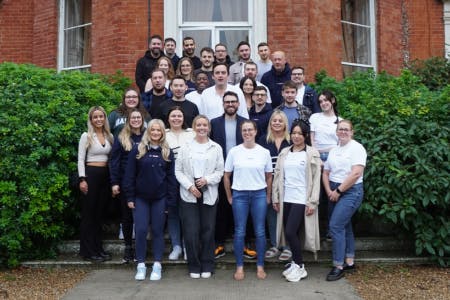Lifetime ISA vs Help to Buy ISA: Which is best for you?
If you’re saving for your first home, having a Lifetime ISA or Help to Buy ISA can make things that bit easier. In this article, we’ll take you through the main difference between the two accounts, and why you might select one over the other.
What’s the difference between Help to Buy ISA and Lifetime ISA?
The main difference between the Help to Buy ISA and a Lifetime ISA is the maximum bonus you can receive from the government per year. Both ISAs are designed to help first-time home buyers get on the ladder by boosting their savings for a house deposit. This works by the government boosting your savings by 25% of what you put in.
With a Help To Buy ISA, the government will give you a maximum bonus of 25%, up to the limit of £12,000, so a maximum of £3,000. For a Lifetime ISA, this is up to £4,000 per year, so you can receive a maximum bonus of £1,000 each year. This is up to the age of 50, at which point your account will stay open until you use it to buy your first home or retire.
You are also limited on house price with a Help to Buy ISA, as you can only buy a home worth £250,000 or less in the UK, or £450,00 or less in London. Whereas with the Lifetime ISA, you can use it to buy a home worth up to £450,000, regardless of whether it’s within or outside London.
Work out how much money you could put aside each month with our Take Home Pay calculator
Help to Buy ISA is no longer available for new customers
The Help to Buy ISA is now closed to new customers - so unless you already have one, your only option is to open a Lifetime ISA.
Save with the market-leading ✨ Cash Lifetime ISA ✨
Save up to £4,000 each tax year and get a free 25% bonus on top of your savings, up to £1,000. Plus, with the Tembo Cash Lifetime ISA, you'll earn 4.1% AER (variable) on your savings - that's hundreds more in interest towards your house fund vs saving with the closest competitor!
What are the pros and cons of the Lifetime ISA?
Pros
You can save up to £4,000 a year in it — tax-free
The government will boost your savings by 25%
You have the choice to deposit the full £4,000 in one go or add it gradually throughout the year
The maximum bonus you’ll receive is £33,000
You can use it to buy a home worth up to £450,000, anywhere in the UK
The government bonus is paid into the LISA monthly, meaning you’ll earn interest or investment returns on the government’s top up as well as your savings
Cons
Must be aged between 18-39 to open one
You may struggle to find a suitable home for £450,000 or less
You need to have the account open for at least a year before you get the bonus
Withdrawing money for anything other than your first home or retirement will result in a 25% exit penalty fee, meaning you’ll walk away with less than you put in
Lifetime ISA vs Help to Buy ISA: Which one is right for you?
If you're wondering whether to open a Lifetime ISA or a Help to Buy ISA, the best option is a Lifetime ISA as the Help to Buy ISA is now closed to new customers. So unless you already have one your only option is a Lifetime ISA!
If you're wondering if to switch your current Help to Buy ISA to a Lifetime ISA, the answer is it depends on your circumstances and goals. What’s right for one person, won’t be right for another. Here are a few questions to ask yourself to if you should move your Help to Buy ISA to a Lifetime ISA.
Can you save more than £200 a month?
If you’re able to save more than £200 a month, it may be worth switching your Help to Buy ISA to a Lifetime ISA since you can save up to £4,000 a year in it. That’s the equivalent of £333 a month, though you can deposit more money in some months and less in others.
Do you want to buy a home worth more than £250,000 outside of London?
Switching from a Help to Buy ISA to a LISA can also be a smart move if you want to buy a more expensive property. With a Help to Buy ISA, you must buy a house worth £250,000 or less if you want to buy outside of London. Whereas the Lifetime ISA property limit is £450,000, no matter where you are in the UK.
Do you want to buy a home in the next year?
If you’d like to buy within the next year, stick with your current Help to Buy ISA. You need to have a Lifetime ISA for a full year before you’ll be able to use the bonus towards your home.
If you’re unsure when you’ll buy your first home, you could open a Lifetime ISA now and put just £1 in it for the time being. This will start the clock and give you more time to decide what to do.
Is there a good chance you’ll need the money for something other than a home or retirement?
Another perk of the Help to Buy ISA is that you can withdraw your own money whenever you like and spend it on whatever you want. You could travel the world or buy a new car with it if you wanted — though you’d only be withdrawing your own contributions. With a Lifetime ISA however, you’ll be charged a 25% penalty on your withdrawal.
If you’re not sure whether you’ll buy a home and using the Lifetime ISA for retirement doesn’t appeal to you, you may be better off sticking with your current Help to Buy ISA.
Alternative ways to get on the property ladder
If you’re able to save a deposit, using the Lifetime ISA or Help to Buy ISA can seem like a no-brainer, but with property prices on the rise, they might not be enough to get your foot in the door.
So, what are your other options? Well, we’re experts when it comes to alternative ways to get on the ladder, so you’re in the right place.
Deposit Boost
You may be able to increase the size of your house deposit even further with the help of your family. If your parents own their home, it may be possible to unlock money from their property and use it towards your deposit.
We call this a Deposit Boost. In short, it involves taking out two different mortgages. The first is taken out by your family member and releases equity from their home. This equity is then gifted to you to boost the size of your deposit. Because of your boosted deposit, you can then take out the second mortgage with better mortgage affordability. But there’s no one-size-fits-all approach to this. There are lots of ways to go about it, which is why it’s a good idea to speak to one of our mortgage brokers.
What is Deposit Boost and how does it work?
Income Boost
For many first time buyers, saving a deposit isn’t the only obstacle standing between them and homeownership. If your income isn’t high enough to get the mortgage you need, an Income Boost mortgage could be the answer.
Also known as a Joint Borrower Sole Proprietor (JBSP) mortgage, an Income Boost lets you add some or all of a family member’s income to the mortgage. This will increase your borrowing potential and make it easier to buy the home you love. To learn more, take a look at our guide to mortgage affordability.
What is an Income Boost mortgage and how does it work?
Guarantor Springboard Mortgages
A family deposit boost mortgage, aka springboard mortgage, is a way to use a family member or friend’s savings without sacrificing their future goals. Let us explain…
This type of mortgage varies from one lender to the next, but usually it involves your chosen helper putting their savings in a designated account for a set period of time.
Their money will then be used as a security. This means that if you were unable to make your mortgage payments, the lender would be allowed to access your helper’s savings and use them to cover the missed payments. Thankfully, this is usually a last resort and most lenders will explore other options first.
If you make all your payments on time, your helper will be able to withdraw their savings once the agreed term is complete. Their money will earn interest while it’s in the account, though the interest rate will vary depending on the chosen lender.
We can help you work out whether a springboard mortgage is right for you and help you find the right lender.
Shared ownership
Shared ownership is a popular choice for many first-time buyers, particularly in London and other parts of the UK where houses cost far more than the average person can afford.
In a nutshell, shared ownership is a scheme that makes it easier for first-time buyers to get on the property ladder by allowing them to part buy, part rent a property.
If you buy a shared ownership property, you’ll usually put down a small deposit and take out a mortgage to cover the portion of the property you own. You’ll then pay rent to a developer or housing association on the rest. This can be a much more affordable option than buying a house in the traditional way.
Over time, you’ll have the option to increase your shares in the property. This is known as ‘staircasing’ and could see you owning the property outright eventually. No more rent. Hooray!
On average our customers boost their budget by £88,000
Discover how much you could afford by creating a Tembo plan. It's free, takes 10 minutes and there's no credit check involved. Plus, you can see indicative mortgage interest rates and monthly payments.



